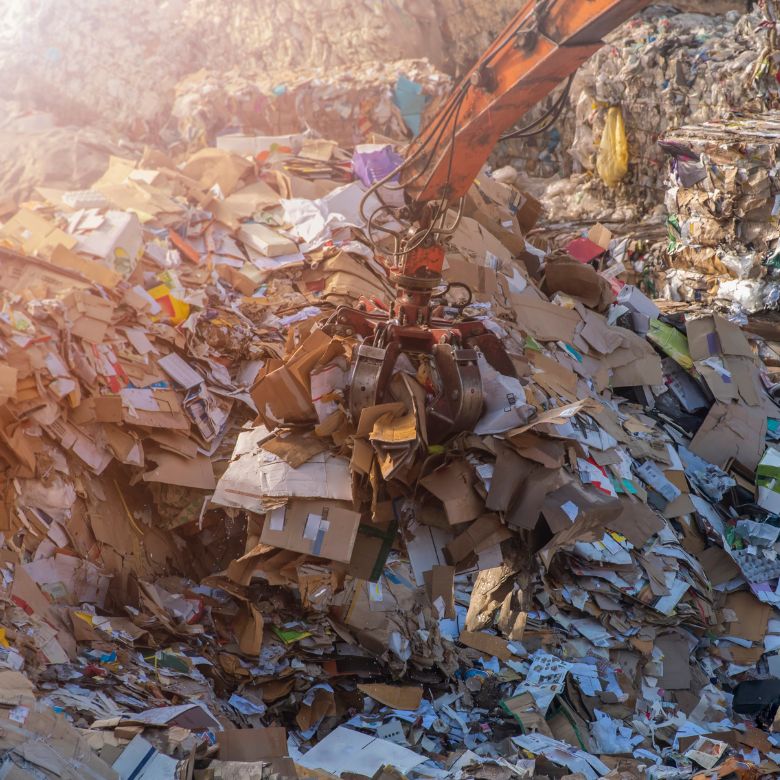Waste reduction is one of the greatest challenges of modern civilisation. Every day, thousands of tonnes of used paper end up in landfills and municipal depots where selective waste is collected. Unfortunately, only a part of this waste is recycled. A lot of raw materials such as paper and cardboard are lost largely due to the lack of inadequate knowledge and lack of environmental education on the part of the public . How to segregate paper waste and why is it so important? Here are the answers!

How important is it to segregate waste paper?
Paper production uses a lot of resources, such as water, trees, and energy. Before the packaging, reams and cartons are sold, they travel a long way from the factories to the final consumers. Thus, the global production and distribution of brand new paper has a high carbon footprint. How to reduce the use of this raw material? The solution is to separate and recycle paper. Thanks to this eco-friendly solution:
- We save Earth’s natural, renewable and non-renewable resources (including trees and water, as well as the petroleum and natural gas needed for their transportation and treatment).
- We reduce the number of rubbish dumps and landfills that poison the soil, air and water,
- We obtain secondary raw materials from which new batches of paper, cartons and packaging can be made.
- We reduce the carbon footprint of paper production.
Waste paper segregation and the law
The segregation of municipal paper waste should not be seen as a whim of a small group of environmentalists. In the twenty-first century, the segregation of raw materials is one of the most effective strategies by which we are able to conserve natural resources. The obligation to separately collect paper applies to all residents of EU countries.
In Poland, the issue of paper segregation appears, among others, in the following pieces of legislation:
- Act of 13 September 1996 on maintaining cleanliness and order in municipalities,
- Regulation of the Minister of Environment of 29 December 2016 on the detailed method of selective collection of selected waste material.
Among other things, the legislator requires municipalities to:
- implement selective waste collection,
- establish regulations for maintaining cleanliness and order in municipalities,
- use standardised labelling and colours for waste bins.
As stipulated in the municipal regulations related to maintaining cleanliness, it is the responsibility of property managers to provide buildings with appropriately labelled paper waste bins. In turn, the obligation to separate waste applies to all residents, and failures to comply are increasingly resulting in fines.
Where should you put waste paper and cardboard?
Since 1 July 2017, the so-called Single Waste Segregation System has been in force in Poland. According to this system, waste bins for paper should be blue and labelled with the word: paper. Some waste bins for paper also have an additional, optional pictogram in the form of the Möbius loop (the loop is composed of three arrows arranged in a triangle and pointing clockwise).

What waste do you put in the blue bin?
What can be put in the blue bins with the paper label? This bin is used for the collection of waste such as:
- printer paper,
- books, notebooks,
- shredded paper,
- paper or cardboard packaging,
- paper bags,
- newspapers,
- brochures, leaflets.
The paper you put in the bin should be clean, dry and folded in such a way that it takes up as little space as possible inside the bin.
How to separate varnished or foil-coated paper waste?
Currently, a very large group of waste consist of foil/aluminium-coated or varnished paper. These include juice and milk cartons, foil-coated leaflets, gift bags, etc. How should you dispose of them? Some of the metallic-coated paper waste should go into the bins for metal and plastic waste. Paper-and-plastic packaging should be put in the mixed-waste bins (the combination of paper and plastics makes it difficult to recycle this type of raw material).
Which waste paper should not be put in the blue bins?
Segregating paper waste is not easy, and many people still make the mistake of putting some non-recyclable waste in the blue bin, including:
- greasy and dirty packaging,
- used paper dishes,
- receipts,
- empty cement bags,
- waxed paper.
Neither nappies, tissues, wallpaper nor wet kitchen paper towels should be put in the paper bins. Any material with strings, metal fittings and plastic attached to it is also not recyclable.
